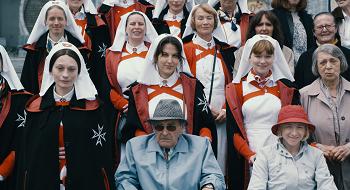
Parisienne de Production/Thermidor Filmproduktion
 |
| Photo
© 2009 Coop99 Filmproduktion/Essential Filmproduktion/ Parisienne de Production/Thermidor Filmproduktion |
| VOR: | (4) (What is this?) |
| Awards: | |
| Venice Film Festival (2009): FIPRESCI Prize; SIGNIS Award | |
| European Film Awards: Best Actress (Testud) | |
| Permalink | Home | 2010 | ABC | Blog |